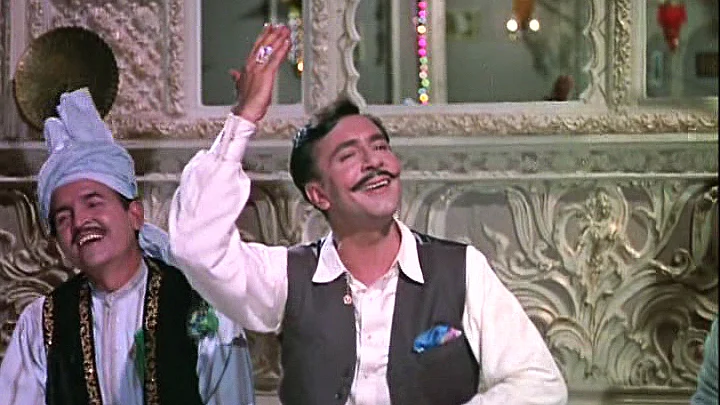Navigating through the frames of Yash Chopra’s Waqt (1965), the only thing that stays with you is the razzle-dazzle of its inhabitants. The first multi-starrer of Hindi cinema which released 50 years ago is a vanity fair, exuberantly different from its contemporaries. This was a time when mainstream Hindi cinema carried a social consciousness, talked about issues, taboos and pathos of post independence India. But Waqt chose to address the extremely First World problems and the angst of the rich.
Though the story takes its cue from Gyan Mukherjee’s Kismet, the lost and found formula is merely an exercise in laying a larger canvas for multiple stars to don glittering costumes, race in expensive cars, and throw parties as and when required. The interior of the houses are finely carpeted, pianos form essential furniture, beds have the dreamlike shape of a circle, and of course, fountains adorn the living room. Come out, and you can enjoy a dip in a large swimming pool, go boating across a lake, or if nothing, you can play badminton in the freshly manicured lawns. All at your disposal, just with the price of a movie ticket.
This was the film that started the signature Yash Chopra style. The fashionably iconic churidar kurtas, that became a rage after this film, were replaced by chiffon saris and desi locales made way for Europe, especially Switzerland in the later films. The life and times of the glamorous, their joys and sorrows are now getting a new polish by Karan Johar, the Akhtar siblings and almost everything produced by Yash Raj Films.
Half a century later, the film seems to be burdened with highly mannered acting and lacks the polish of Yash Chopra’s later works. After ‘Ae meri zohra jabeen’, a delightful romantic ditty by Balraj Sahni, an earthquake makes the happy family go off course, all the characters grow up, and take the story forward unaware of their bloodline. With multiple stars, the plot moves at its own whim, mostly showing off the lifestyle of the well-heeled, and it’s only when it’s almost past half time that the film decides to take the reign of the narrative. There is a constant crisscrossing of the characters, teasing the audience about the inevitability of destiny. Finally, a courtroom drama forms the climax, and brings all the characters together for a happy ending.
There are talks that Waqt will be remade with a new star studded cast in the growing market of remakes which yield quick money. Perhaps a redesign is required. As a viewer, I wish we could get back the empty spaces, the clean beaches of Bombay depicted in the film. But considering that is a fruitless wish, all one could do is maybe revisit this time capsule.
To celebrate its landmark year, more than the film, play Asha Bhosle’s haunting ‘Aage bhi jaane na tu’, for Sahir Ludhianvi’s words capture the irony of fate like no other.
(The writer is a journalist and a screenwriter who believes in the insanity of words, in print or otherwise. His Twitter handle is: @RanjibMazumder.)
(At The Quint, we question everything. Play an active role in shaping our journalism by becoming a member today.)
